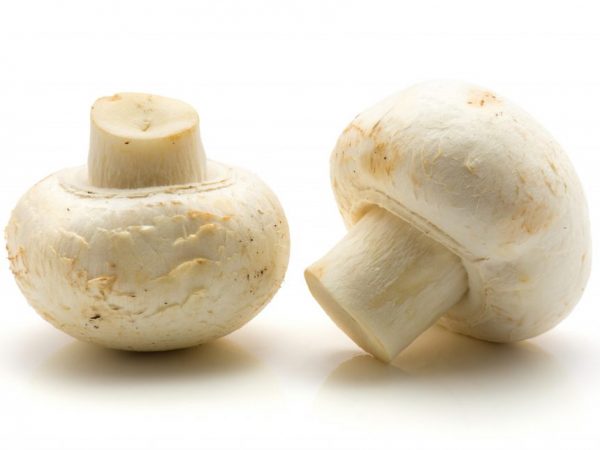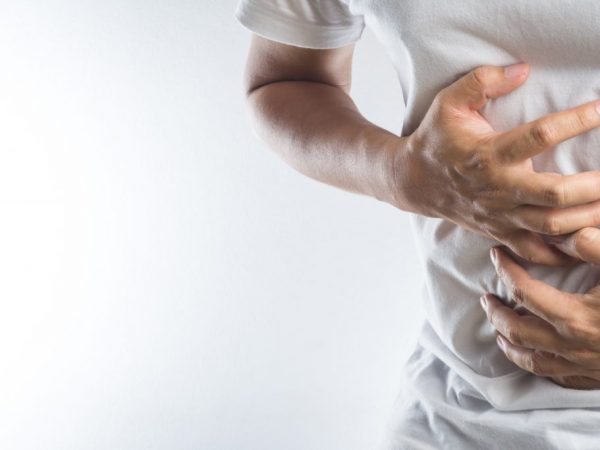How to distinguish false champignons from real ones
Champignons are a popular type of mushrooms that are easy enough to grow at home, you just need to strictly adhere to all the requirements. There are not only edible species, but also false mushrooms. They are dangerous to humans - they cannot be eaten.

The difference between false champignons and real
Description of the appearance of the mushroom
Fake, or as we say - false, mushrooms differ, depending on the age and place where they grow. Most often mushroom pickers are found mushrooms of a reddish hue, which belong to the species yellow-skinned champignon... Also, lovers of "quiet hunting" are familiar with the type of false mushrooms called champignon is flat-shaped. It has a pungent, unpleasant odor reminiscent of ink.
- Yellow-skinned champignon: The color of the hat of this dangerous double of the edible champignon can be different. If the mushroom grows in a clearing well-lit by the sun, it will have a grayish tint. Instances growing in forests are distinguished by a beige color with an orange tone. Young false champignon has white plates under the cap, which darken with age and become almost black. They are easy to distinguish, because real mushrooms have a rough cap, sometimes covered with scales, while the double has a smooth skin, which sometimes cracks along the edge.
Irina Selyutina (Biologist):
Perhaps in the description of false champignons, a remarkable fact is the "aroma" of the pulp, which almost immediately "surrenders" the double with giblets - smell it and you will never send it to the basket:
- pulp w. yellow-skinned has a characteristic "pharmacy" or, to be more precise, a phenolic smell, which, even if it is very weak in a fresh mushroom, will increase significantly during cooking;
- pulp w. flat-bottomed characterized by a pungent odor, which is usually compared to the smell of creosote, ink or phenol.
- Mushroom flat-cap mushroom: representatives of this species have a leg up to 10 cm high with a diameter of up to 2.5 cm. It is cylindrical in shape, slightly thickened at the bottom. In the middle there is a double white ring. The surface of the cap is covered with gray or gray-brown scales. Thin frequent white plates with a pinkish tint are placed under the cap. In older mushrooms, they become dark brown.
Differences between false and edible champignon
False mushrooms (poisonous) and real mushrooms are often confused (especially by beginners or not attentive mushroom pickers), and this is deadly. We can say that the poisonous double of the champignon may have a speck of gray-brown (brown) color in the center of the cap, when pressed on, yellowish spots appear. However, this verification method does not provide an exact guarantee, so it should be combined with other methods. Therefore, it is important to consider the following factors:
- the mushroom slice quickly acquires a bright yellow hue
- at the base of the leg, there may be characteristic yellow spots in the pulp;
- there is a sharp "chemical" smell (disinfectant, phenol, ink, gouache);
- during cooking, the water and the fruit bodies themselves turn yellow, but only for a short time. By the way. This method is considered the most accurate.
These are insidious mushrooms, even after a long cooking, poisonous substances in them do not disintegrate.
You can confuse champignon with a pale toadstool: but this option is only possible for young specimens. Outwardly, it really resembles champignon and at the same time does not have a smell, according to which it was possible to draw a conclusion about its "professional unsuitability". False champignons most often appear in July in mixed and deciduous forests; they can also be found in clearings in city parks.
Real champignons look different. The place of the cut has a pinkish tint. Also, the edible mushroom begins to grow in May, while the false one only in the middle of summer.
Virulence
Inedible champignon actively absorbs toxic substances from the soil. The consumption of such mushrooms leads to a certain level of intoxication. According to the degree of danger, the edible double mushrooms are classified as moderately poisonous, capable of provoking an upset stomach, which manifests itself in the form of diarrhea, vomiting, and fever. A large portion of eaten mushrooms can be fatal.
Poisonous mushrooms also contain substances that negatively affect proteins. This causes a violation of the contraction of the heart muscle.
Poisoning symptoms

At the first symptoms of poisoning, call an ambulance.
The first signs of poisoning are vomiting and indigestion. These symptoms appear within 2-3 hours. Later, stomach cramps appear. Similar symptoms are caused by pale grebe and poisonous meadow mushrooms.
There are several stages of mushroom poisoning. Their description:
- There is a spastic pain in the abdomen, the body temperature rises. Later, diarrhea begins.
- A person feels a slight improvement in well-being, but toxic substances continue to affect the liver and kidneys. This is confirmed by analyzes. Remission lasts 1-2 days.
- At this stage, the defeat of the internal organs reaches its peak. Hepatic and renal failure begins.
In case of poisoning with false mushrooms, you must call an ambulance at the first stage of poisoning. Before her arrival, it is important to remove toxins from the body.
First Aid Description:
- drink at least 1.5 liters of a weak solution of potassium permanganate and induce vomiting to flush the stomach;
Irina Selyutina (Biologist):
Gastric lavage as a component of first aid is very important, because allows you to remove pieces of mushrooms from the stomach and prevents further absorption by the intestinal walls of toxins that enter the digestive tract together. At the same time, it is advisable to save the remains of the dish so that the laboratory of the medical institution can analyze and identify toxins in order to carry out treatment.
- sorbents are taken at the rate of 1 g per 1 kg of the patient's weight (maximum 10 tablets of activated carbon);
- a warm heating pad is placed on the stomach and legs: this helps to avoid circulatory disorders;
- drink strong tea or warm water.
Treatment for poisoning
After hospitalization, the patient is detoxified:
- enema;
- gastric lavage;
- hemodialysis.
The choice of the method of treatment depends on how much of the dangerous product the patient has eaten.
Later, the patient is restored to the water-electrolyte (salt) balance or put on a dropper. The victim must also adhere to a special diet:
- stop eating fatty, spicy and smoked foods;
- eat only boiled food;
- finely chop vegetables and fruits before eating.
When providing first aid, you should not induce vomiting in children under 3 years of age and women in a state of pregnancy. Also, do not give enemas to people of age without the help of a doctor.The victim is forbidden to take drugs that fix the stomach. This is especially important when poisoning with dangerous mushrooms such as pale toadstool.
Conclusion
The inedible champignon is a dangerous mushroom. Its toxic properties cannot be neutralized even with prolonged heat treatment. It is most often found between July and September. Edible mushrooms are easy to distinguish from false ones in a number of external signs.
The first symptoms of poisoning appear within 3-4 hours. The use of a large amount of the product can lead to death.



